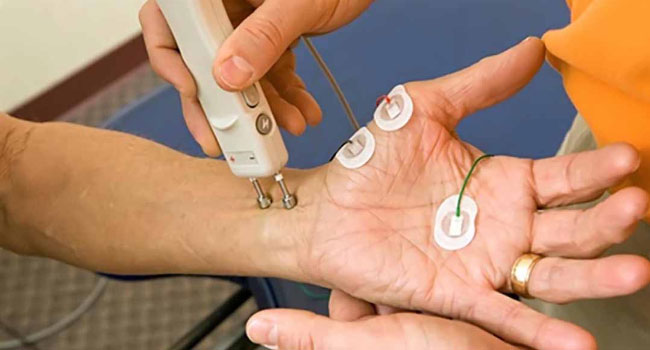What is carpal tunnel syndrome?
Carpal tunnel syndrome (CTS) is a kind of compression neuropathy (nervous system disorder) caused by an increase in pressure on the median nerve. The carpal tunnel is a region in the wrist through which the Median nerve passes. This nerve provides feeling to the thumb, index, middle, and part of the ring finger, as well as innervation to muscles that regulate thumb movement.
When the median nerve is compressed, the fingers, hand, and wrist experience increased sensitivity, tingling, discomfort, weakness, or numbness; the pinky finger is mostly unaffected. Nighttime numbness and/or discomfort are prevalent in people with this illness. Furthermore, it is not unusual for many people to suffer symptoms bilaterally (on both sides of the body).
The following are common symptoms of “Carpal Tunnel Syndrome”:
- Numbness or tingling in the fingers or throughout the hand.
- Burning pain in the hand or wrist.
- Hand activity aggravates hand/wrist discomfort.
- Hands often feel chilled.
- Swelling of the fingers or hands.
- Weakness in grip strength
- After using your hands, you may notice that they are weary or sluggish to react.
- Pain shooting down the forearms and into the hand.
How is it identified with EMG and NCV?
Carpal tunnel syndrome is diagnosed mostly by clinical examination and the patient’s history of symptoms. It is important to understand that not all wrist and finger discomfort is caused by CTS. Furthermore, not every finger numbness or tingling is caused by CTS. The use of nerve electrodiagnostic testing to confirm the diagnosis is often helpful.
To confirm the diagnosis of carpal tunnel syndrome and other nerve problems, electrodiagnostic testing, which includes nerve conduction and electromyography (EMG) testing, is performed. The transmission of electrical impulses via the median nerve in the carpal tunnel and into the related muscles is evaluated in nerve conduction studies (NCS). A conduction block, or slowing of the electrical signal as it travels through the carpal tunnel is looked for. The altered sensations and muscular weakness associated with this illness are caused by the diminished passage of electricity.
EMG testing is used to study the muscle itself. This section of the test is important for identifying early nerve injury because it may detect extremely minor loss of muscular function long before the patient has any subjective loss of strength.
If you wait too long after experiencing frequent symptoms to schedule your EMG Test, you will be extending your illness, delaying proper and accurate diagnosis, and enabling scar tissue to form.

